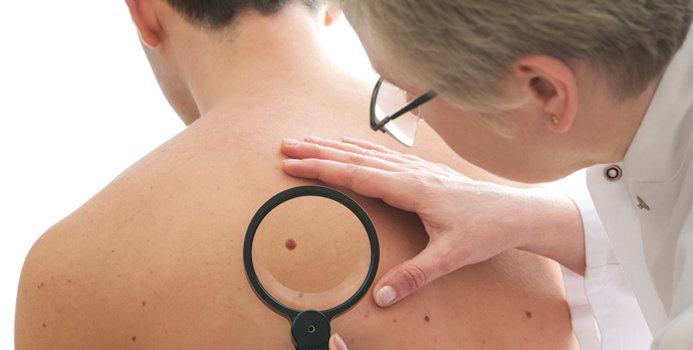Moles are pretty common skin growths that most people have. Normal moles can be either flat or raised and are smooth and regularly shaped. They usually appear early in life and may make regular appearances throughout life through sun exposure. Unfortunately, moles can also be signs of skin cancer. It’s not always easy to distinguish between normal moles and abnormal moles. To help, scientists have developed the ABCDE’s of mole characteristics.
ABCDE is an acronym to help both patients and doctors discern whether or not a mole is cause for concern. The letters stand for:
A is for Asymmetry. If you drew a line through your mole, the halves would be different.
B is for Borders. The borders of your mole are kind of irregular or difficult to discern, whereas normal moles have a clear border.
C is for Color. Normal moles tend to be uniform in color: completely tan, brown or flesh-colored. Irregular moles may be a hodgepodge of tan, brown, dark brown, red, blue or black.
D is for Diameter. The size of most normal moles is less than that of a pencil eraser. Irregular moles tend to be larger.
E is for Evolution. Evolution refers to any changes that can occur in a mole, such as one you’ve had for years and begins to evolve by growing bigger or taking on new characteristics. This letter also refers to any new moles that appear after the age of 40.
There are also other early signs to watch out for that can indicate a mole is atypical. The center of the mole is raised or has “pebbly” elevations. Moles that vary greatly in appearance can also indicate that a mole is atypical. As melanoma progresses, the signs vary and worsen and may include pain, itching, bleeding, elevation, bleeding, crusting, swelling, oozing, ulceration and a color that is bluish-black. These are serious signs of melanoma, indicating that the cancer has progressed. To prevent melanoma from progressing, do visual checks of your moles and see a dermatologist once a year for a full body scan to make sure all moles are normal.
[Image via Getty]



